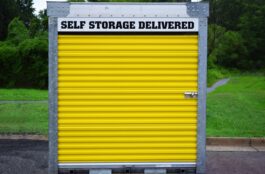Whether from a leaky roof, moisture from your central air conditioning, or floods, drywall water damage may cause stress and annoyance. Monitoring your property proactively and fixing water leaks will reduce wear and the need for renovation. Know that with the assistance of a skilled specialist, you can resolve the concerns, whether they involve water damage or a sink pipe leak.
When water from a flood, leaking pipes, or a leaky roof enters your house, drywall water damage results. Act swiftly to prevent mildew and mold growth and reduce damage if drywall becomes wet.
Being proactive will aid in preventing water damage to your house. Check for water leaking, wet carpets or walls, and stains on the ceiling or walls, often by eye examination.
Drywall Water Damage Signs
An odor from mold or mildew might result from water damage to drywall. Both the inside and exterior of your house might sustain damage. While physically evaluating your home could be helpful, you might need to use a moisture meter to find hidden moisture, such as wet fiberglass or wet insulation.
Discoloration and Fading
Because of the afflicted area’s continual exposure to moisture, damaged drywall may become discolored or faded. Mold development and wet drywall result from excessive moisture, which happens when the afflicted region stays wet for too long.
Areas lacking insulation or walls exposed to moisture can all lead to discoloration and fading. Use a moisture meter to confirm drywall water damage if you have any doubts. Consult professionals to help you with water damage restoration.
Peeling Paint and Wallpaper
Paint peeling or bubbling might appear overnight, surprising the homeowner. It often goes unnoticed when moisture seeps through the wall’s interior and reaches the paint’s surface layer. The moisture content behind the walls is usually pretty high when the color starts to peel and bubble, indicating a leak has been going on for a while.
Musty or Mildew Odor
Your house may smell musty if moisture levels are not maintained, indicating mildew, mold spores, or bacterial development. Do not ignore the smell, even if you could become accustomed to it.
Water-damaged drywall is the ideal environment for mold to grow. Dehumidifiers can help lower moisture levels and eliminate odors, but checking your house for any other indications of concealed water damage is essential.
Bulging or Sagging Drywall
A bulging or sagging drywall will be evident and damp to the touch. Do not dismiss indicators of drywall expansion or sagging. It can indicate a significant leak that is exerting strain on the entire wall and jeopardizing the stability of your house. For fire damage restoration, contact a trusted restoration company.
Mold on Your Baseboards and Walls
All types of mold can be found with water damage since they like dark, moist environments. It also implies that finding mold in your home’s deepest crevices could be challenging. Mold is typically visible behind furniture and in tight spaces that are difficult to spot with the naked eye.
However, any indication of mold should raise red flags. Mold is quite harmful and may have some adverse effects on your health. You should contact a mold remediation expert as soon as you see any mold in your home. Visit a restoration company like Puroclean in Northport for additional information.


